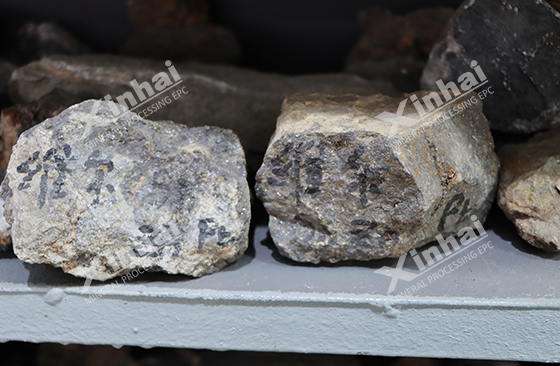
Lead-zinc ore, as an important strategic resource, occupies an important position in the field of nonferrous metal industry. At present, lead and zinc are mainly used in electrical, mechanical, military, metallurgical, chemical and other fields. At present, the process commonly used for lead-zinc ore dressing is flotation separation process, but in actual production, flotation technology and equipment are often difficult to adapt to the flotation of fine-grained lead-zinc ore, resulting in low concentrate recovery rate and serious metal loss.

In order to improve the comprehensive utilization level of lead-zinc ore resources and realize the full recovery of fine-grained lead-zinc minerals, it is imperative to understand the reasons and improvement measures for the difficulty of recovering fine-grained minerals and fine-grained lead-zinc minerals. The following will introduce the reasons and improvement measures for the difficulty of flotation separation of fine-grained minerals and the recovery problems and improvement measures of fine-grained lead-zinc minerals.

The main manifestations of the difficulty in recovering fine-grained minerals by flotation separation are slow flotation speed and low recovery rate. The main reasons are as follows:
1. Due to the small mass and high surface energy of fine-grained minerals, different mineral particles are prone to non-selective coagulation. At the same time, fine-grained minerals are prone to adhere to the surface of coarse-grained minerals to form a sludge cover. These factors will affect the separation of target minerals from non-target minerals.
2. Due to the large specific surface area and surface energy of fine-grained minerals, the ability of minerals to adsorb reagents is strong and the selectivity is poor.
3. When the mineral particle size is finer, the more ions are inevitably dissolved in the slurry, and these fine-grained minerals are easily entrained by water flow or foam machinery because of their small mass.
4. The contact efficiency and adhesion efficiency of fine-grained minerals and bubbles are reduced, and the capture efficiency of bubbles on mineral particles is reduced.

1. Strengthen the dispersion of fine-grained minerals to prevent mutual agglomeration between fine-grained minerals in the slurry and adhesion to the surface of coarse particles.
2. Select a selective polymer flocculant to link fine-grained useful minerals to increase the apparent particle size, thereby improving the selectivity of fine-grained minerals.
3. Use a highly selective agent to improve the effect of the agent. The foam produced by the frother should have appropriate brittleness to enhance the secondary enrichment effect and reduce the entrainment of fine mud. However, the amount of reagent added needs to be strictly controlled during the flotation process, and the segmented addition method should be selected as much as possible.
4. Increase the solubility of air in the slurry, improve the foaming mechanism, and increase the amount of active microbubbles in the slurry, thereby realizing microbubble flotation and increasing the flotation time, which can fully recover the useful components in the mineral.

1. The use of simple grinding process causes the mudification of lead-zinc minerals and the difficulty of recovering useful minerals. Lead-zinc ore is often associated with other components. When grinding fine-grained lead-zinc ore and lead ore with uneven particle size, in order to achieve monomer dissociation of useful minerals and simplify the grinding process, the lead-zinc minerals that have been monomer dissociated are not separated in time, and the mudification of lead-zinc ore is inevitable, which will cause excessive loss of lead-zinc minerals.
2. Due to the inherent extensive production concept and the constraints of fine-grained recovery technology, it is impossible to formulate a flotation separation process suitable for grinding products according to local conditions. In the flotation process, people often only focus on tracking the concentrate grade and recovery rate, thus lacking the tracking and investigation of the degree of dissociation, over-crushing, and enrichment of minerals of the process intermediate products. When the content of fine particles and mud of lead-zinc minerals is unreasonable, it is also difficult to adjust the flotation process to deal with this situation.

According to the properties of the lead-zinc ore, a reasonable grinding and flotation separation process should be formulated. For lead-zinc ores with uneven distribution of coarse and fine particles, a process of stage grinding and stage recovery should be formulated as much as possible to achieve early recovery and reduce the over-crushing of lead-zinc minerals that have been dissociated. For fine-grained lead-zinc ores, we should focus on formulating a reasonable flotation process, selecting appropriate mineral processing equipment, and formulating a reasonable reagent system, so as to improve the overall recovery rate of lead-zinc ore.
In summary, the flotation separation recovery of fine-grained minerals faces many challenges, especially the recovery of lead-zinc minerals is more complicated. By understanding the reasons why fine-grained minerals are difficult to recover by flotation and taking corresponding improvement measures, the recovery rate and resource utilization efficiency of lead-zinc ores can be effectively improved. The application of these technical means can not only improve the comprehensive utilization level of mineral resources, but also provide important guarantees for the realization of green and sustainable mining production.
To find out more about our products and solutions, please fill out the form below and one of our experts will get back to you shortly.